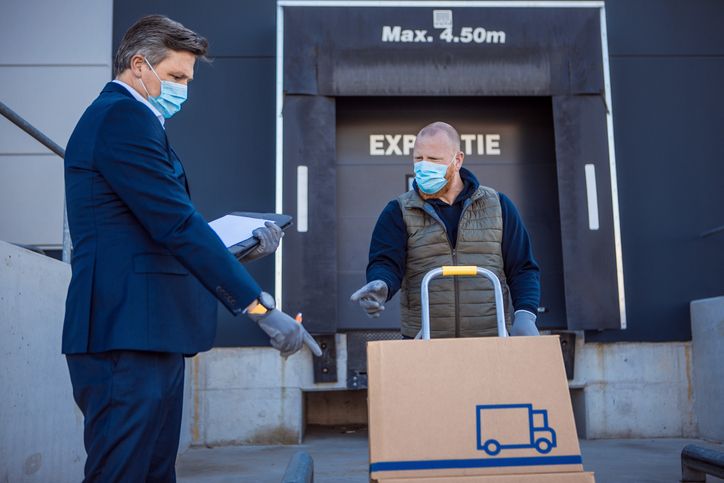Written by: Cory Levins
In 2020, the business world faced unprecedented challenges that will have ripple effects for the foreseeable future. A spike in online shopping meant that most eCommerce businesses fared well, but obstacles in the supply chain often forced business owners to be innovative to remain competitive. Some saw a dramatic increase in their need for shipping materials and supplies to meet the overall increase in orders.
General trends in supply chains for 2021 will continue much as they did in 2020. Since consumer confidence is still wavering due to the effects of the pandemic, they might not return to previous shopping habits for a while. Here are six supply chain trends to keep an eye on and consider for your own business.
1. Coping with Increased Costs
Because the COVID-19 pandemic sparked panic-buying and disrupted supply lines, the cost of many goods went up. At times, this cost increase looked like it might have been offset by a dramatic drop in fuel costs, but fuel prices rebounded quickly enough that it had little effect on overall costs in the end.
Another potential spike in costs came from reduced air shipping availability. This variable partly depended on the routes being used but was pronounced in international routes in particular. Since some countries banned tourism entirely, many shipments ended up relying on courier companies instead of standard shipping in cargo holds on passenger flights.
Companies have had to get creative in how they trim costs throughout their facilities, from their labor costs to their shipping materials. They may have to pass some of these costs on to customers and eCommerce vendors, but if in-person shopping is slow to return after the pandemic, the eCommerce industry overall may be indifferent to the increase.
2. Finding New Suppliers
COVID-19 exposed the fact that suppliers will run out of raw materials and producers will be unable to increase their speed beyond a certain point in the event of a shortage. Postal service and port delays also threw a wrench into things by making it harder for items to get to their destination.
In many cases, manufacturers had to diversify their supply chain to minimize interruptions. Although they didn’t always have to eliminate existing contracts, they usually began ordering from other suppliers in an attempt to shore up stockpiles of materials and have a vetted, trusted stable of backup suppliers to call upon if needed.
With the global economy and shipping still reeling in 2021, many companies that had to diversify their product line and suppliers in 2020 will continue to use those connections. This more proactive approach to risk management will likely continue, especially since eCommerce and small businesses in general are so vulnerable to postal service disruptions.
3. Implementing Agile Supply Chains
Despite the overall need to cope with supply chain disruptions, more companies are looking at agile supply chains as an option. Agile supply chains adapt quickly to consumer demands by keeping enough stock on hand to meet consumer needs, but not stockpiling multiple months of supply.
This works best for industries where consumer preferences change frequently, meaning that a large stockpile of goods could end up going to waste. This may be applicable for fast fashion, technology and accessories and semi-custom items.
In some cases, it makes sense for manufacturers to keep a large stockpile of commonly used raw materials or components on hand but wait as long as possible before completing the finished product. eCommerce companies can continue to keep large quantities of staples like cardboard shipping boxes on hand, but take a more conservative approach to stocking their products or raw materials they sell.
eCommerce companies can partner with manufacturers who use agile supply chains to create better products as soon as customers need them. Take advantage of the flexibility afforded by agile supply chains to provide your vendors feedback on products and make requests for changes.
4. Ensuring Faster Delivery
Even in the face of COVID-19 and its related delays, many customers began to want their orders faster. For eCommerce vendors, the high volume of orders and the increase in desired delivery speed sent a ripple effect through the supply chain.
Some eCommerce vendors have responded by increasing their staffing or streamlining their order picking and logistics. This has allowed highly efficient companies to get orders in the mail the same day they are placed. However, this can be a challenge for eCommerce companies with a large assortment of products or ones that allow product customization.
5. Improving AI
Artificial intelligence has improved significantly in recent years, making it easier than ever to predict your supply and demand with software. You can run data analysis programs to assess upcoming potential variables and guess what products will be in demand next. Although it’s impossible to account for all variables, AI has become shockingly accurate even in niche industries.
Using a data-driven approach to supply chain management makes it easier to be proactive instead of simply reacting to market conditions. This allows agile supply chains and other supply chain models to retain as much cost-efficiency as possible without unnecessary delays.
6. Introducing Automated Systems
Another benefit of improved AI is increased automation. Robots and other equipment have been able to do some tasks automatically, but accounting for all possibilities when programming robots has been a challenge. Now that AI can sense and handle objects more accurately, it’s easier than ever for companies to automate larger portions of their assembly line.
Automated picking requires substantial up-front investment but pays off in the long term in reduced labor costs and increased efficiency. It may also improve overall worker safety, especially if your warehouse regularly works with large pallets of goods.
If you can’t automate every step of the process, consider at least automating certain steps. This may include repackaging goods with your company name on them, printing shipping labels and reordering products.
Creating the Perfect Balance
Some aspects of these trends seem to contradict one another, and the trends that apply most to your industry depend on the type of products you sell. Keep them in mind as you plan your expansion or respond to shifting conditions, especially if you’re operating on razor-thin profit margins or are still recouping your startup costs.
No matter what challenges you face, make sure to keep open communications with customers and suppliers. This can allow you to identify new opportunities and be proactive when a new challenge may appear. With a little foresight and openness, you can stand out as a reliable eCommerce partner even during the uncertainties of 2021.
Bio: Cory Levins serves as the Director of Business Development for Air Sea Containers. Cory oversees the development and implementation of ASC’s internal and external marketing program, driving revenue and profits from the Miami, FL headquarters. Before joining Air Sea Containers, Cory Levins was the Director of Business Development for Marketing and Real Estate Lending Companies.



